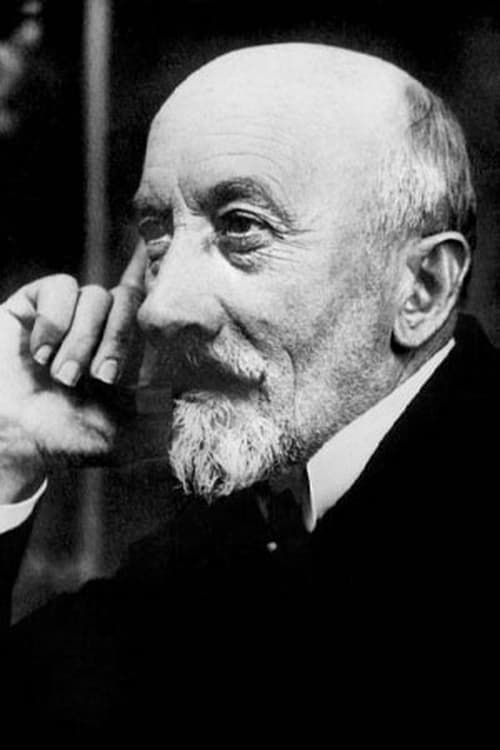Landing of Dreyfus at Quiberon (1899)
장르 :
상영시간 : 1분
연출 : Georges Méliès
시놉시스
A section of the port Haliquen (Quiberon) Bretagne, at night where Dreyfus was landed by French marines, and officers after his transport from Devil's Island. He is received by the French authorities, officers, and gendarmes, and conducted to the station for his departure to Rennes. This little scene was enacted on a dark rainy night, which is clearly shown in the film. The effects are further heightened by vivid flashes of lightning which are certainly new in cinematography.

Showing room at the military prison at Rennes in which Dreyfus the accused is confined. He is visited by his counsel, Maître Labori and Demange, with whom he is seen in animated conversation. A visit from his wife is announced, who enters. The meeting of the husband and wife is most pathetic and emotional.

Du Paty de Clam requests Captain Dreyfus to write as he dictates for the purpose of ascertaining whether his handwriting conforms to that of the Bordereau. He notices the nervousness of Dreyfus, and accuses him of being the author of the Bordereau. Paty de Clam offers Dreyfus a revolver, with advice to commit suicide. The revolver is scornfully rejected, Dreyfus stating that he had no need for such cowardly methods, proclaiming his innocence. His arrest is immediately ordered by M. Cochefort.

The infamous Dreyfus is finally brought before a court martial.

A reenactment of a scene inside Devil's Island prison.

Showing the interior view of the hut in which Dreyfus is confined. The scene takes place at night, showing the moon through the window of the cell. Two guards stealthily approach the cot upon which Dreyfus is sleeping. They awake him and read to him the order from the French minister–M. Lebon–to put him into irons, which they proceed at once to accomplish. Dreyfus vigorously protests against this treatment, which protests, however, fall on deaf ears. The chief sergeant and guards before leaving the hut, inspect the four corners of same by means of a lantern.

Maître Labori is seen approaching the bridge of Rennes in company with Colonel Picquart and M. Gast, Mayor of Rennes. They notice that they are followed by another man to whom Colonel Picquart calls Labori's attention. They, however, consider his proximity of no importance, and continue to speak together. As soon as their backs are turned, the man draws a revolver and fires twice at Maître Labori, who is seen to fall to the ground. The culprit makes his escape, pursued by Colonel Picquart and M. Gast.

During an interval in the proceedings of the court martial, the journalists enter into an animated discussion, resulting in a dispute between Arthur Meyer of the 'Gaulois', and Mme. Severine of the 'Fronde', resulting in a fight between Dreyfusards and Anti-Dreyfusards, in which canes and chairs are brought down upon the heads of many. The room is finally cleared by the gendarmes.

Shows the interior of the cell of the Prison Militaire du Cherche-Midi, Paris, where Colonel Henry is confined. He is seated at a table writing a letter, on completion of which he rises and takes a razor out he had concealed in his porte-manteau, with which he cuts his throat. The suicide is discovered by the sergeant of the guard and officers.

A burning wagon is dragged from the barn by the firemen, and four horses are rescued from the flames by the stablemen. Thick volumes of smoke pour from the doors and windows. (Edison catalog)

A group of young women and children enjoy a rowdy picnic in the countryside.

Two girls do one of their chores. Standing alongside a tree-lined farmhouse, two children who are about ten and four years old toss grain to a flock of about 50 domesticated ducks. A woman watches them briefly and then moves on. The older girl has her grain in a bucket, the younger one's grain is in her apron. The children stay in one spot, as does the camera; it's the ducks that move around. Chickens are in the background; only one braves the ducks' territory.

Sovereign Nicholas II, Alexandra Feodorovna and President Félix Faure, walking by, followed by their respective escorts.

A fellow in a wide-brimmed hat, with a willowy stick for a rod and a baited hook, sits down on a plank hanging over a bridge above a stream. He sticks the rod under his seat and picks up his bottle to take a swig. Behind him creeps a joker who removes the large flagstone that's holding the fisherman's plank in place (IMDb)

Méliès appears as a court jester (a “triboulet” in French). He pulls 18th century noblemen out of a trunk and arranges them on a pyramid-shaped stage. Next, he transforms the gentlemen into fancy ladies.

Two men have a contest to see which one can be the first to eat a large slice of watermelon.

A crowd watches the Newark Fire Department respond to a call.

Vaudeville dancer Amy Muller performs a portion of her stage routine, which features dancing on her toes. She dances on one toe for part of the performance. Later, she also twirls and does cartwheels.

This picture was taken at one of the curves on the Lehigh Valley Railroad, along the beautiful Susquehanna River. The train is seen rapidly approaching in the distance, clearly outlined against the grey mountains. Smoke can be seen pouring in volumes from the stack of the locomotive, and as the train approaches closely, she sounds a whistle, warning some section men, who are working on the tracks in the foreground. As she rushes by the camera, the swing motion of the train gives a vivid idea of the lightning speed at which she is traveling. (Edison film catalog)

Members of the New York state militia enjoy some relaxing time during a meal break.

Two children, Ploetz and Larella, perform an Italian peasant dance.


